Discovering Coron
Despite the bad weather. Michael and I spent a weekend in the secluded island paradise of Busuanga, the largest island of the Calamian Group of Islands lying between Mindoro and mainland Palawan. Our Busuanga contact told us that the sea is always calm in this part of the Philippines, perhaps because of the island’s unique position.
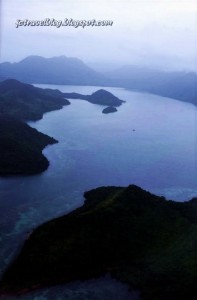 Landing on Busuanga island is like being welcomed into a lush Australian savanna. Shortly after we get off the Cebu Pacific propeller plane and ride the van to Coron town, we realize why. Riding with us is Raffy, who works with the local tourism authority. He tells us a very interesting tidbits about his hometown and hands us a map of Busuanga.
Landing on Busuanga island is like being welcomed into a lush Australian savanna. Shortly after we get off the Cebu Pacific propeller plane and ride the van to Coron town, we realize why. Riding with us is Raffy, who works with the local tourism authority. He tells us a very interesting tidbits about his hometown and hands us a map of Busuanga.
The Busuanga airport is situated on the vast tracts of land comprising the Yulo King Ranch, purported to be the largest ranch in Asia. The estate was said to be confiscated from the Yulos by a former dictator who brought in and propagated carpet-like Australian grass to feed the Australian Brahman cows that roam freely in the ranch. The ranch has since been sequestered by the government and is currently run by Bureau of Agriculture and Fisheries as a nature reserve.
The municipality of Coron is a 45 minute-drive from the Busuanga airport, which is said to still run on generators, because of the lack of electricity in the area. The very comfortable and scenic ride costs us Php 150 each. Once in a while, we chance upon herds of Brahmans harmoniously grazing side by side, unmindful of the egrets playfully landing on their backs. There are local cowboys too, but they don’t dress like John Wayne here.
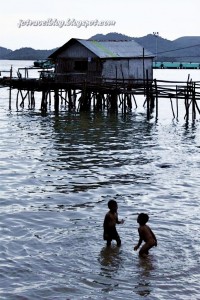
Coron is a coastal town, with a population 30,000, where everybody has a welcome smile. Locals wave and smile at us as if we were close friends. We are informed that the town proper and Coron island are two different places. Coron town is the main town south of Busuanga, while Coron island is a 15-minute boat-ride away from town and is known for several World War II Japanese shipwrecks.
We check in at the highly recommended Amphibi-ko, a quaint bed and breakfast facing the ocean, which boasts of free wifi connection, a Japanese restaurant, a gym and for the adventurers, land and water sports vehicles. Owned by a Japanese who married a Filipina, Amphibi-ko presently has only 2 rooms and more still under construction. We are welcomed by Ina the front desk manager and we find out that we are the only guests there. After showing us our rooms, she hails a tricycle for us.
We take a 5-minute ride around the busy town plaza and then dropped by one of the small cashew stores in town. Coron is known for its delicious cashew nuts. We learn later on that the hardy cashew plant is one of the few plants that thrive in Coron’s acidic soil. Although there seems to be a lot of arable land in municipalities of Coron and Busuanga, we found no rice fields, which is peculiar for a Philippine province.
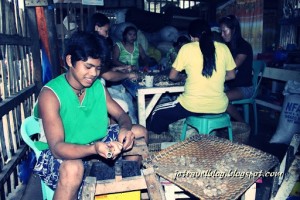 The crew in Golden Harvest Cashews ushers us into their small store and asks to try breaking apart a cashew nut by using this specialized cutter. I almost cut my fingers as I yank the lever to cut the cashew nut in half. Once cracked open, it is then sorted by hand, before it is roasted in garlic. We bought 250-gram packs for Php 100. They are also gracious enough to hand us 4 saplings of cashew plant for us to bring home. We learned later on that it takes at least 15 years for a cashew plant to bear fruit. We sample the naturally sweet and crunchy nuts as we head for our next destination–Maquinit hot springs.
The crew in Golden Harvest Cashews ushers us into their small store and asks to try breaking apart a cashew nut by using this specialized cutter. I almost cut my fingers as I yank the lever to cut the cashew nut in half. Once cracked open, it is then sorted by hand, before it is roasted in garlic. We bought 250-gram packs for Php 100. They are also gracious enough to hand us 4 saplings of cashew plant for us to bring home. We learned later on that it takes at least 15 years for a cashew plant to bear fruit. We sample the naturally sweet and crunchy nuts as we head for our next destination–Maquinit hot springs.
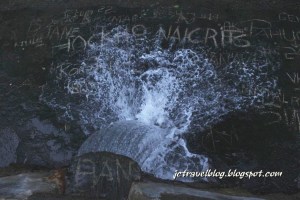 Before that, our thoughtful tricycle driver Mang Ed, with his sound system blaring classic Filipino hits, takes us on a detour to Nueva Street, to buy us tickets for the spring. He asks us to buy here so we can get the local rate of Php 50 each, instead of the usual charge of Php 100 at the resort entrance. It was a bumpy 45-minute ride. On our way to the hot springs, we notice that the soil here is rocky and reddish in color and reminding us of our trip to Spain. The volcanically heated spring is located on the foot of a hill partly hidden by mangroves that faces the open sea. We reach the place near sunset, which turns out to be the best time of the day to visit. This attraction is open until 10 PM.
Before that, our thoughtful tricycle driver Mang Ed, with his sound system blaring classic Filipino hits, takes us on a detour to Nueva Street, to buy us tickets for the spring. He asks us to buy here so we can get the local rate of Php 50 each, instead of the usual charge of Php 100 at the resort entrance. It was a bumpy 45-minute ride. On our way to the hot springs, we notice that the soil here is rocky and reddish in color and reminding us of our trip to Spain. The volcanically heated spring is located on the foot of a hill partly hidden by mangroves that faces the open sea. We reach the place near sunset, which turns out to be the best time of the day to visit. This attraction is open until 10 PM.
When we arrive, we see couples, families, both locals and tourists enjoying the warm water. We also see a lady in crutches dipping her injured feet into the small pool near the entrance. The 33 to 40 degrees C water must be therapeutic too. There are two hot pools near the spring and both cascade down into a larger pool. Water from this large pool, in turn,cascades down to the ocean.
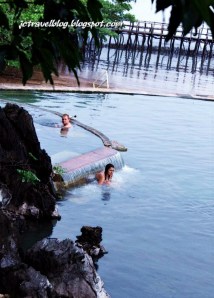 I am quite surprised by the hot water that greets me at the large pool but pretty soon my body adjusts to the temperature. It is a very relaxing dip. I will not forget the view as I floated lazily from the pool. Michael and I take advantage of the healing properties of this sulfuric water by dunking our faces into the cascading mini-falls that divided the two pools. Instant sauna and facial! When we alight from the springs, we do feel an improvement in skin texture.
I am quite surprised by the hot water that greets me at the large pool but pretty soon my body adjusts to the temperature. It is a very relaxing dip. I will not forget the view as I floated lazily from the pool. Michael and I take advantage of the healing properties of this sulfuric water by dunking our faces into the cascading mini-falls that divided the two pools. Instant sauna and facial! When we alight from the springs, we do feel an improvement in skin texture.
It is dark when we board our tricycle, but for the other guests at the springs, the party is just starting. Some have brought food and drinks bought from the local sari-sari (convenience store) store that sells goods imported from Manila and thus the high price. Our tricycle gets stuck in the red mud and Michael goes down to help our driver carry the vehicle up a slope. That’s when we realized why they charge Php 150 per person for this trip.
Although it rained the whole night as we slept cozily in our room on stilts at Amphibi-ko, we are greeted by the early morning sun! The weather is perfect for visiting Coron Island, with its unique rock formations, caves, and dive sites. We join another Filipino couple from Manila along with Kiko, our boatman, and two others. The view is breathtaking. I am almost disappointed that my DSLR cannot completely capture all this beauty.
Tired from snorkeling, we find ourselves docking on the pristine white sands of Island 91, called so because high school batch ’91 had their reunion here. Michael and I are both overwhelmed by the crystal clear water. The water was almost transparent! As I swim, I see white fishes, no make that translucent fishes, playing close to the shore. A school of them found lunch in what seems like a small white octopus which they are nibbling with delight.
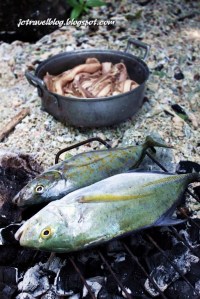 Soon, it’s our turn to have lunch. Kiko and his friends, who went to the market for us early this morning, have prepared a delicious meal consisting of rice, fresh broiled fish, roasted pork liempo, Maya-maya fish broth, bananas and mangoes. I kid you not, it is one of my most memorable meals. I almost never want to leave this idyllic island.
Soon, it’s our turn to have lunch. Kiko and his friends, who went to the market for us early this morning, have prepared a delicious meal consisting of rice, fresh broiled fish, roasted pork liempo, Maya-maya fish broth, bananas and mangoes. I kid you not, it is one of my most memorable meals. I almost never want to leave this idyllic island. 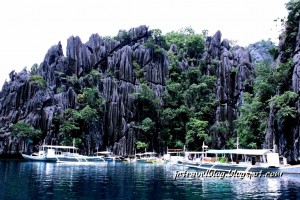 Next stop is the Twin Lagoons. We arrive at this cove fronting a small natural opening. We are pleasantly surprised two see at least 5 vessels filled with local and international tourists. And this is supposed to be off-season. Since the small entrance renders it impassable, Michael and I swam to the entrance. Some tourists brought kayaks and inflatable rafts. As we go deeper into this big lagoon which is surrounded by emerald-colored hills, we notice that the water is less salty and smells stagnant. There are also pockets of cold and hot water intermingling. We swim far into to the edge of the lagoon only to discover that it opens to the wide into ocean. We feel like we were tricked to enter the small entrance for a Php 100 fee when we could have entered from the other end, but I guess there’s no thrill in that. It was a beautiful stop nonetheless.
Next stop is the Twin Lagoons. We arrive at this cove fronting a small natural opening. We are pleasantly surprised two see at least 5 vessels filled with local and international tourists. And this is supposed to be off-season. Since the small entrance renders it impassable, Michael and I swam to the entrance. Some tourists brought kayaks and inflatable rafts. As we go deeper into this big lagoon which is surrounded by emerald-colored hills, we notice that the water is less salty and smells stagnant. There are also pockets of cold and hot water intermingling. We swim far into to the edge of the lagoon only to discover that it opens to the wide into ocean. We feel like we were tricked to enter the small entrance for a Php 100 fee when we could have entered from the other end, but I guess there’s no thrill in that. It was a beautiful stop nonetheless. Catching our breath, we go down the slope to reach the beautiful lake below. Since it rained the night before, the lake is swollen with water and it overflows to the bamboo walkway. The water is not as clear as we had hoped but we did see green swordtail fish swimming by the bamboo planks. Some families chose to have a picnic there. I just hope they will be careful with their trash. We linger there for a while, tasted the cool fresh water and just took in splendid view.
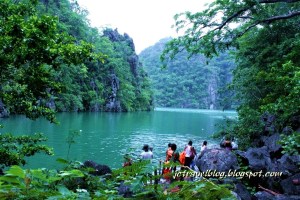 Our last stop for the day is Siete Pecados Marine Park, which is Spanish for “seven sins.” It is a group of seven islets surrounds an extensive coral reef. Even before we could dock, the caretaker of this attraction hurried to us in his small banca. His name is Agapito. He seemed sad because the rains have made the water murky. We chose not to feed fish from the comforts of the boart, instead of diving into the water. Our boatman Kiko, a Coron native who used to worked as a fastfood crew in Makati City, catches an angel fish with his bare hands. The reef is obviously teeming with marine life. He shows the fish to us before promptly throwing it back to the ocean.
Our last stop for the day is Siete Pecados Marine Park, which is Spanish for “seven sins.” It is a group of seven islets surrounds an extensive coral reef. Even before we could dock, the caretaker of this attraction hurried to us in his small banca. His name is Agapito. He seemed sad because the rains have made the water murky. We chose not to feed fish from the comforts of the boart, instead of diving into the water. Our boatman Kiko, a Coron native who used to worked as a fastfood crew in Makati City, catches an angel fish with his bare hands. The reef is obviously teeming with marine life. He shows the fish to us before promptly throwing it back to the ocean.
Estimated cost for a 3 days/ 2 night stay: P2,500
/span /spanspan style=”font-weight: bold;”

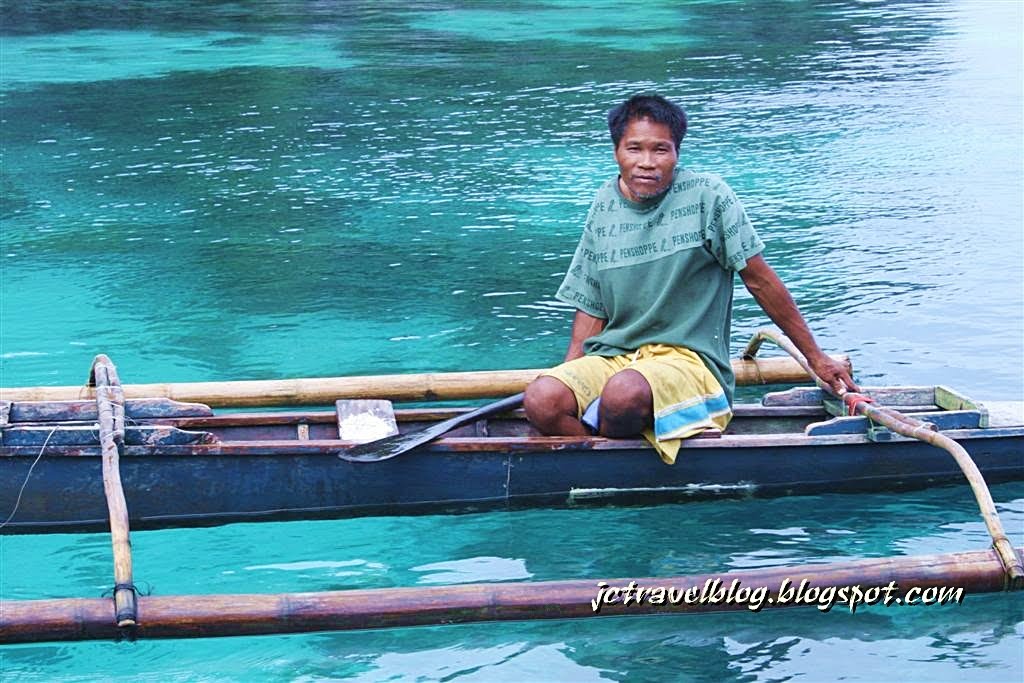
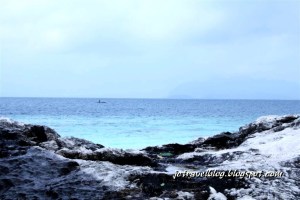


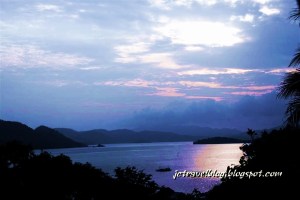
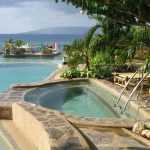
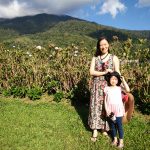
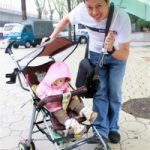
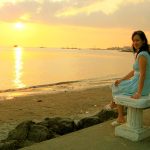
 Jenn C.
God-lover.
Milk & TV Producer.
Writer.
Entrepreneur. Natural Health Advocate.
Jenn C.
God-lover.
Milk & TV Producer.
Writer.
Entrepreneur. Natural Health Advocate.





